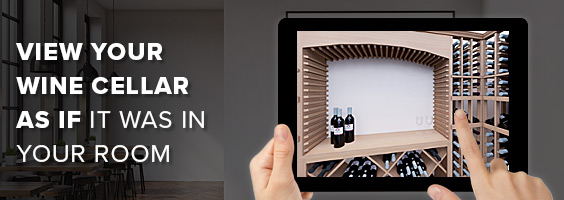You’ve invested in several select bottles of wine. You want to age them correctly so that you can enjoy them on a significant anniversary, birthday, or even a Tuesday. But how do you cellar and age your wine accurately so that it’s not spoiled by the time you open it? Here are some of the considerations for cellaring and aging wine.
Understand why aging is beneficial

It’s important to understand what makes aged wine so appealing. When wine ages, tannins integrate into the wine for a smoother finish. Typically, the non-fruit aromatic characteristics of wine start to shine through with age. It can be particularly spectacular to age wines produced during ripe years in warm climates. When enjoyed young, they can sometimes be overly fruity. However, with some age, the fruit characteristics mellow, uncovering more non-fruit earthy and oaky notes.
Now that you understand the why of aging wine, we can delve into what you need to wring the absolute best flavor out of every last drop.
- Store bottles correctly

Store wine bottles on their sides. You want the wine to keep the cork wet. If the cork dries out, it can shrink and let in air. The air causes the wine to oxidize, which will turn it into vinegar by the time you go to enjoy it.
There are all kinds of excellent wine storage solutions that enable you to store your wine beautifully and efficiently. You can opt for traditional, wood-based cellar shelving. Alternatively, you can build something more modern. There are many modern wooden wine rack or metal wine rack designs that can fit your style.
- Track your wines
When you’re aging wines, it’s essential to keep track of your wines so you know when they’ll be ready to enjoy. Generally, it is good to have a section for ready-to-drink wines, then a section for each of the stages based on the number of years left of aging. You might have a category for five years, ten years, fifteen years, and so on.
If you’ve been aging wines for some time already, you might have a “one year out” or “two years out” section. You’ll want to think through the categories you need when you design your custom wine cellar.
- Control the temperature

The ideal temperature for a wine cellar is approximately 55°F or 12°C to 13°C. The temperature does not need to be exact. A little volatility in your cellar is acceptable. However, if the temperature falls below 25°F or -4°C, the wines will freeze. The cork will pop out.
If your cellar is too cold, the wine will not benefit from aging as the wine’s structure will be unbalanced, and it will not develop flavors. At hot temperatures, your wine will essentially cook. When you open the wine, the aromas will be flat.
Store your wines at the right temperature and install a cooling system if your wine cellar’s temperatures would be too volatile without one.
- Control the humidity
Humidity is also an important consideration. If it’s too humid in your cellar, it can degrade corks and labels. If humidity is too low, your cork can dry out. In turn, dried corks let air into the bottle and oxidize your wine. The ideal humidity level is anywhere between 50-70%.
If you live in a humid place, install a vapor barrier to prevent natural humidity from entering your wine cellar. Alternatively, you can add a dehumidifier to your space. If you live in a dry place, you can add a humidifier to your cellar. Buy a hygrometer to monitor humidity levels.
Final Thoughts
Overall, if you’re investing in wines for aging, it is prudent to invest in a proper wine cellar. Preserve your wines by storing them in a space that allows them to develop to their maximum aging potential. When you finally open up your perfectly aged bottles of wine, it will be worth the effort and the wait.
 Waterfall Wine Room 01 – VR360 Preview
Waterfall Wine Room 01 – VR360 Preview
If you’re ready to begin seriously storing and aging wine, then installing a wine cellar into your home or restaurant is the next step you need to take. You can get started with an augmented reality full-color render of your potential custom wine cellar by visiting us at https://winecellars.com/wine-cellar-design/ or calling us at (800) 659-WINE (9463).

